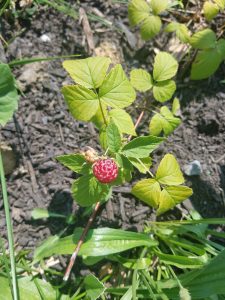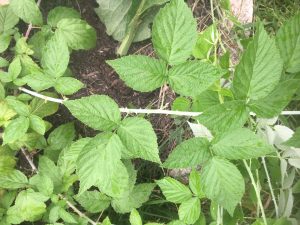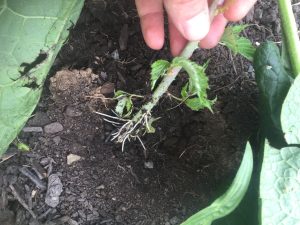(Rubus occidentalis)

Description
Also known as the wild black raspberry, this plant grows as a cane-forming perennial with pinnate leaves with five leaflets on first-year canes, and three leaflets on second-year flowering canes. Leaves are dark green on the top and a pale, almost bluish green on the bottom. First-year canes are pale blue-green with thorns, but become woodier and dark red in their second year. Flowers grow on second-year canes and produce a small red fruit composed of many drupelets that ripens black.

Cultivation Tips
The blackcap tolerates compacted and depleted soils fairly well, so long as it gets sufficient water. Blackcaps like full sun, although we have observed certain specimens fruiting well even in high shade. If the tip of a first-year cane is buried slightly in the ground in the fall and left to over winter, it will root from the tip and send up new canes in the spring. The new plant can then be cut free from the parent and transplanted elsewhere, or left in place as part of a living fence. Cutting back second-year canes in late fall after fruiting can help encourage new growth and more fruiting. Seeds of the blackcap require cold stratification before they will germinate, so keep them moist in the refrigerator for two to three months or sow in the fall for spring germination.

Uses
The fruit of the blackcap raspberry are exceptionally delicious on their own and also make great jams and pastry fillings. They are high in anthocyanins and other antioxidants, with potential anti-cancer effects [6, 7]. The leaves can also be dried and steeped into a tasty tea. Berries can be mashed and used as a dye. The berries are an important food source for many species of birds, and the brambles also provide habitat and cover.
Friends
Blackcap raspberries make a great edition to a living fence, and can be used to protect other, more susceptible plants from rabbit and deer browse.